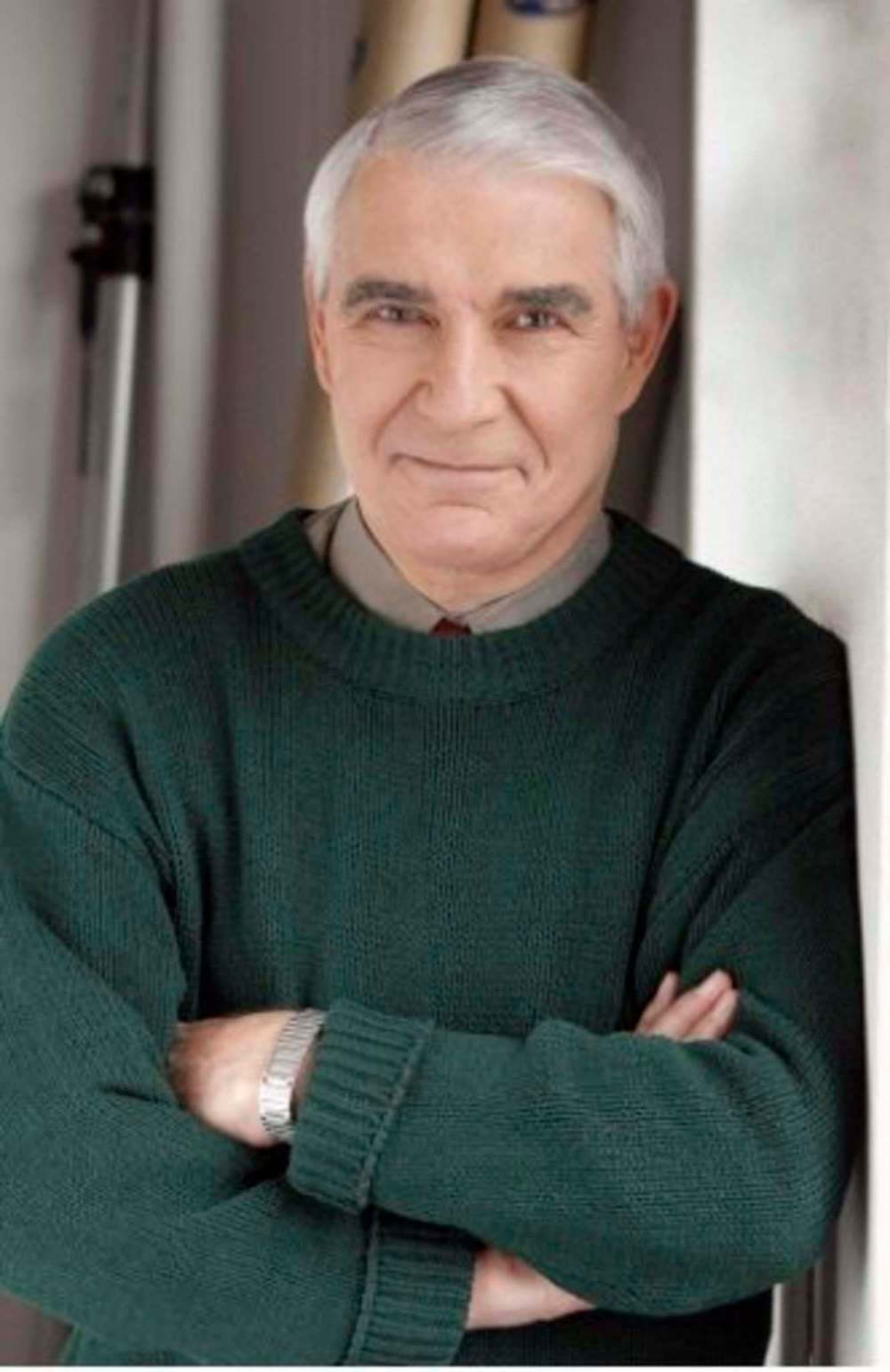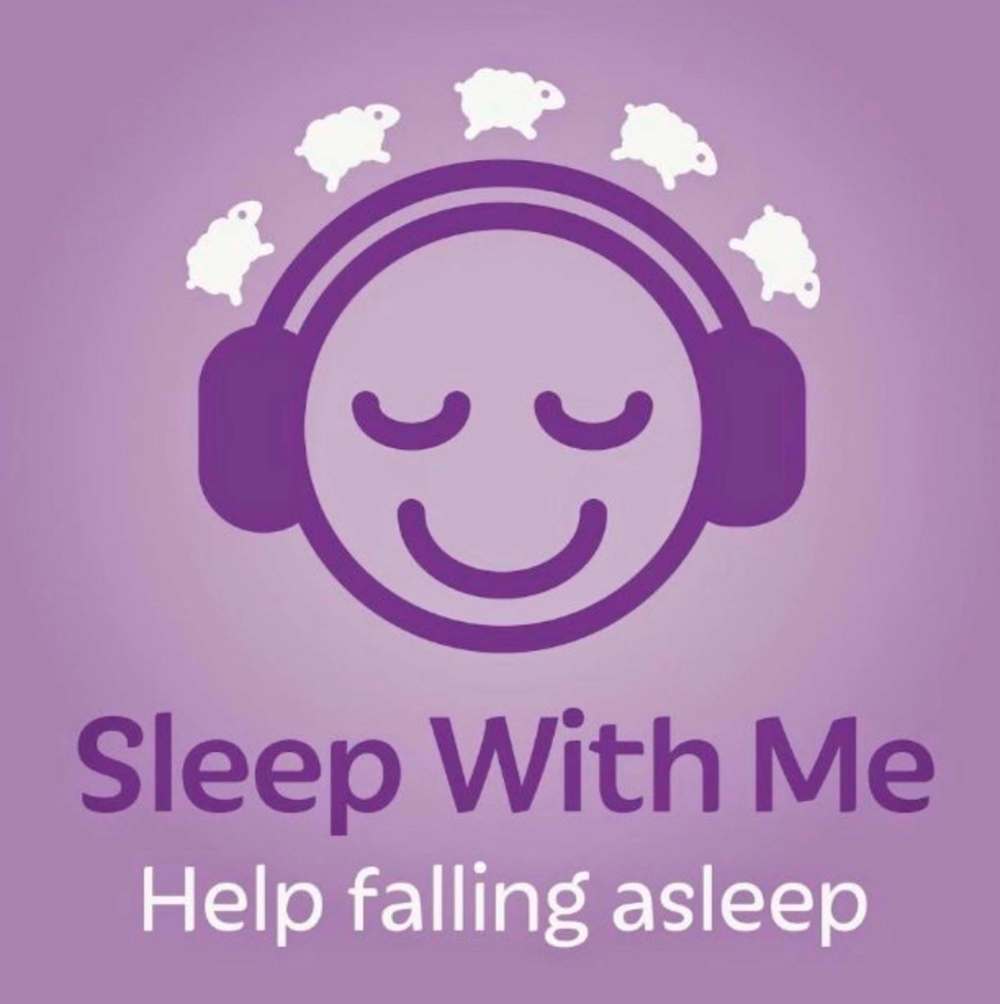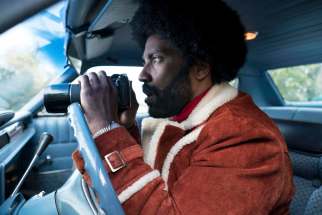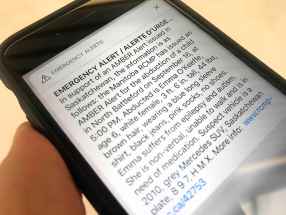Stories that tuck you in If you're not feeling sleepy, these specially designed audio tales might will help you nod off
Read this article for free:
or
Already have an account? Log in here »
To continue reading, please subscribe:
Monthly Digital Subscription
$0 for the first 4 weeks*
- Enjoy unlimited reading on winnipegfreepress.com
- Read the E-Edition, our digital replica newspaper
- Access News Break, our award-winning app
- Play interactive puzzles
*No charge for 4 weeks then price increases to the regular rate of $19.00 plus GST every four weeks. Offer available to new and qualified returning subscribers only. Cancel any time.
Monthly Digital Subscription
$4.75/week*
- Enjoy unlimited reading on winnipegfreepress.com
- Read the E-Edition, our digital replica newspaper
- Access News Break, our award-winning app
- Play interactive puzzles
*Billed as $19 plus GST every four weeks. Cancel any time.
To continue reading, please subscribe:
Add Free Press access to your Brandon Sun subscription for only an additional
$1 for the first 4 weeks*
*Your next subscription payment will increase by $1.00 and you will be charged $16.99 plus GST for four weeks. After four weeks, your payment will increase to $23.99 plus GST every four weeks.
Read unlimited articles for free today:
or
Already have an account? Log in here »
Hey there, time traveller!
This article was published 21/02/2019 (2486 days ago), so information in it may no longer be current.
Phoebe Smith seems an unlikely choice to pen stories intended to soothe people to sleep. An “extreme sleeper,” the British travel writer is best known for venturing to places where it’s difficult to doze off; she’s placed her pillow on glaciers, in caves and on mountaintops, sleeping solo on summits and other forbidding areas.

So when Michael Acton Smith, one of the co-founders of Calm, an app designed to help people with mindfulness, meditation and sleep, approached her to turn her travel article about a trip on the Trans-Siberian Railroad into a sleep story, she says, “I wasn’t sure whether to be wildly offended or mistrustful.”
Sleep stories are the latest aid for insomniacs trying to knit up the ravelled sleave of care, catch some zzzs or get some shuteye. Bedtime stories for grown-ups, they are rambling tales read in hushed voices that move forward without any goal in mind. There’s no conflict, no climax — mostly just a long, scenic journey (train travel is popular in the genre) with plenty of pauses to breathe in the atmosphere and reflect on the surroundings.
Many sleep stories are existing narratives, fairy tales and the like, but Acton Smith wanted to experiment with a different form; he was sure Smith’s journey could be rewritten in a way that would turn a gripping tale into a soporific story.
Improving sleep health
Dr. Diana McMillan is an associate professor in the faculty of nursing at the University of Manitoba who is engaged in a variety of sleep research and also consults privately as a sleep coach.
“One of the things that we have that helps us to fall asleep is like a little switch in way,” she says. “The reticular activating system is the part in our brain that takes information in our external and in our cognitive environment.”
Dr. Diana McMillan is an associate professor in the faculty of nursing at the University of Manitoba who is engaged in a variety of sleep research and also consults privately as a sleep coach.
“One of the things that we have that helps us to fall asleep is like a little switch in way,” she says. “The reticular activating system is the part in our brain that takes information in our external and in our cognitive environment.”
Just as you likely know that you won’t be able to sleep right after playing a hard game of hockey or running vigorously — an external stimulus that’s raised your metabolic rate and set your heart pounding — the same goes for a busy mind.
“If you’ve got Christmas-tree lights in your head, your reticular activating system going wild, it doesn’t allow that switch,” says McMillan, who has the kind of soothing voice that could narrate sleep stories. “You need a calm mind in a calm body for that switch to flick over.”
Though she doesn’t personally use audio stories as part of her strategies to promote sleep health, she says the format would likely bring about the required combination of distraction and relaxation required to achieve slumber (though she stresses that users should avoid using their phones before bed, and remember to turn off their ringer and notifications or risk undermining the effect.)
“These (stories) sound essentially like guided imagery — that may work for some people. I actually teach people how to do that,” she says. “On the rare occasions when I’ve had trouble sleeping, I imagine canoeing in a particular creek… I imagine the feel of the paddle, the wood in my hands, really carefully doing a nice J-stroke. I’m smelling the forest and pine needle, listening to the ripple of the water. I have yet to go past the third bend in that creek.”
She explains that insomnia can be a vicious circle, where a run of sleeplessness can fuel anxiety that leads to more sleeplessness.
“A lot of people find themselves in acute insomnia — something bad happens: you have a loss in your family; you lose your job; you’re really worried about something — that’s a normal reaction to a stressful situation, and hopefully that can resolve,” she says. “Some individuals have more challenge with that resolution and it can be for a whole host of reasons… They’ve had a run of acute insomnia because something happened, and now they’re getting even more anxious about falling asleep. They’re fine until their head hits the pillow and then their eyes pop open and you can almost feel their blood pressure rise.
“Those are the people who would likely respond to this sort of intervention.”
However, McMillan warns against relying solely on sleep stories, likening them to just one tool insomniacs can employ for better sleep health. (”If you’re using a saw one day, you don’t throw out your hammer,” she says.)
She recommends maintaining a full complement of sleep tools, including getting enough exercise, sticking to a regular wake time and bedtime, and refraining from using screens of any kind or playing interactive games before bed. Having clean sheets and a cool, very dark bedroom can also be beneficial.
“Some people also find regular audiobooks helpful, especially if the narrator has a lovely voice,” she says. “It is distracting you and suppressing your self-talk, which is so often negative.”
Now, when she’s not dangling from a rock face or hiking a trail, Smith regularly contributes sleep stories — all based on her real travels, just slowed down and stretched out — to Calm. (The app is free to download, but premium features cost US$12.99 a month or $59.99 a year.)
Asked how she reconciles the seemingly polar opposite jobs — sleeping in the most inhospitable conditions by night and penning stories to lull insomniacs by day — Smith, who has just returned from spending a bitterly cold night in a tent in the middle of nowhere (the geographic location in the mountains of Scotland that’s the farthest point from any road in mainland Britain), says the two ideas aren’t really that different.
“I’ve always had difficulty sleeping in my own bed at home, and when I started doing these extreme sleeping things and headed out into the wilderness, I noticed that I slept much better,” she says.
“I think the reason was that I was so focused on staying warm or staying safe as I’m hanging by a rope from a cliff that that was all I could really focus on. And suddenly all the other worries of bills to pay, emails to answer, deadlines to meet, they were no longer important. Everything was forced into perspective.
“The idea of the sleep stories is that you’re almost doing a similar thing. You’re intriguing and enticing people into something that they’re interested in but you’re telling the story in such a way that you’re taking them on a meander, a slow exploration. And so they’re trying to stay awake because they want to listen to it, which stops them worrying about falling asleep, but it’s written, produced and narrated in such a way that you should never make it to the end.”

Ian McCausland, 51, uses the sleep stories on Headspace — like Calm, a subscription-based meditation/sleep app — to help him drift off. The Winnipeg photographer isn’t a chronic insomniac, but, like many of us, sometimes finds himself with what Buddhists call “monkey mind,” in which anxiety and stress clamour for attention like drunken simians.
He has tried other methods, but finds the wandering but marginally narrative form of the stories more effective than white noise or a subdued soundtrack.
“I’m a big music fan, so I did try playlists of quiet music,” he says. “But I found there was too much space there for my mind to go back to whatever was stressing me out. I would realize I wasn’t even listening to the music anymore. Instead, my brain was just revisiting things I was worried about.”
The app also offers guided meditations — McCausland does try to meditate in the mornings, which he says seems to have improved his sleep habits — but he says the Headspace sleep stories, a blend of speaking and ambient noise whose respective levels can be adjusted, provide just the right balance of distraction and dullness.
He finds them effective at relaxing him within about 10 minutes, although, because he listens to them on headphones, he often doesn’t fall asleep completely before turning them off.
Podcasting a sleep spell
To his family and friends he may be Drew Ackerman, but to his legions of listeners he’s lovingly known as Dearest Scooter, creator and host of the thrice-weekly Sleep With Me podcast.
“Ladies and gentlemen, boys and girls and friends beyond the binary,” begins each episode, “it’s time for Sleep With Me, the podcast that puts you… to sleep.”
Since 2013, the California-based Ackerman has produced and hosted more than 700 episodes of Sleep With Me. In interviews Ackerman has acknowledged his interest in creating a sleep-aid podcast sprung from his own troubles dozing off; Sleep With Me is now one of the most popular sleep-related podcasts, his subscribers number in the hundreds of thousands and the podcast is downloaded over two million times per month. He’s been featured in the New Yorker, Forbes, Observer, the Dr. Oz website and more.
Like most sleep aids, the first few listens to Sleep With Me may not work for listless listeners, but persistence typically results in successful snoozing. The average episode of Sleep With Me lasts about an hour but, like most audio sleep aids, listeners are often lulled to sleep well before the podcast’s end.
Each episode begins with a 15-ish minute recap in Dearest Scooter’s “lulling, creaky, dulcet tones” of how the podcast works, before he finally digs into the subject matter at hand — for those who are still awake. (There’s a reason he sometimes refers to himself on the podcast as “your bore-friend.”)
Subject matter on Sleep With Me spans the inane and the boring: Ackerman slowly reading through recipes, recapping episodes of The Good Place or Star Trek: The Next Generation, or Ackerman’s own serial creations such as “Nuns in Space” or “Superdull Stories.”
Recently Ackerman has taken to producing live tapings of Sleep With Me; those in attendance bring a pillow, blanket and pyjamas, cosy up in a communal space and listen as Dearest Scooter narrates his sleepy-time script (although episodes sound spontaneous, they tend to follow at least a rough set of notes).
https://youtu.be/L7Kuq8wd0Ec
Only a podcast app, which most smartphones come equipped with, is needed to listen to Sleep With Me. Most of Ackerman’s podcasts are available for free at sleepwithmepodcast.com, although he also prepares special episodes for those who support Sleep With Me via a monthly Patreon subscription.
— Ben MacPhee-Sigurdson
Although her stories are about 25 minutes long, Smith says research has shown most listeners make it about as far as McCausland — but that doesn’t mean she phones in the conclusion.
“If you do stay awake, I want the end to be good, so I can’t put any old rubbish in,” she says, laughing. “I’ve actually had people ask for a copy of the script because they’re really interested in it and want to know what happens at the end. I’ve also had people tell me they’ve listened to them at their desk at work so they can’t fall asleep.”
Smith’s stories have been narrated by some famous folks, such as Joanna Lumley of Absolutely Fabulous and British actor/author Stephen Fry, who loaned his plummy voice to Blue Gold, her dreamy, languorous tramp though the lavender fields of Provence.
Part of the story’s effect is the way Fry’s proper pronunciation elongates vowels, the way he seems to roll certain words around in his mouth appreciatively and relishes alliteration. The listener gets caught up in listening to his distinctive diction — yet another distraction from the mental burdens that can keep sleep at bay.
New York-based Alan Sklar is an in-demand voice-over artist and audiobook narrator — you’ve probably heard him say, “Call now and recieve this limited-time bonus” on TV more than you know — who is also a popular narrator of sleep stories for Calm, from The Monarch Butterfly Trail to Wonder of the Northern Lights.
“My wife laughed,” he recalls of when Calm first contacted him. “She said, ‘They’re hiring you because your voice puts people to sleep’ — she’s very fresh.”

Sklar, whose rich baritone belies his 84 years, is more than just a pretty voice, however. An actor who trained with legendary teachers Lee Strasberg and Stella Adler, he knows how to put just enough “smile” into a recording that, by design, is supposed to have “no emotionality, just flat,” he explains. His speech can boom with authority, but on his sleep stories, it’s more of a purr.
After he’s sent a script by Calm, he goes through it carefully to check pronunciations and to gauge flow; the company’s executive producer provides detailed notes. These include such tips as to avoid over-enunciation, to keep “voice fluctuation and intonation at a minimum” and to steer clear of enhancing the drama, as well as specific instrutions on where to slow down and where to begin speaking more softly.
“I’m skilled enough to tell the story so that the listener is still arrested by it,” Sklar says.
He’ll record several versions of the script at his home studio in Westchester County until he finds the right balance. He edits the recording to clean up any bad breaths or pauses and then emails the file to Calm headquarters in San Francisco for final production and inclusion on the app.
Sklar says he gets fan mail from grateful Calm users who go to bed with him every night, but he has never needed to use sleep stories himself: “I’m an old-timer,” he says, laughing. “I go to bed around eight o’clock, eight-thirty. I lie in bed and watch the news, what Mr. Trump is up to, and then I fall asleep by myself.”
jill.wilson@freepress.mb.ca
Twitter: @dedaumier



Jill Wilson writes about culture and the culinary arts for the Arts & Life section.
Our newsroom depends on a growing audience of readers to power our journalism. If you are not a paid reader, please consider becoming a subscriber.
Our newsroom depends on its audience of readers to power our journalism. Thank you for your support.











